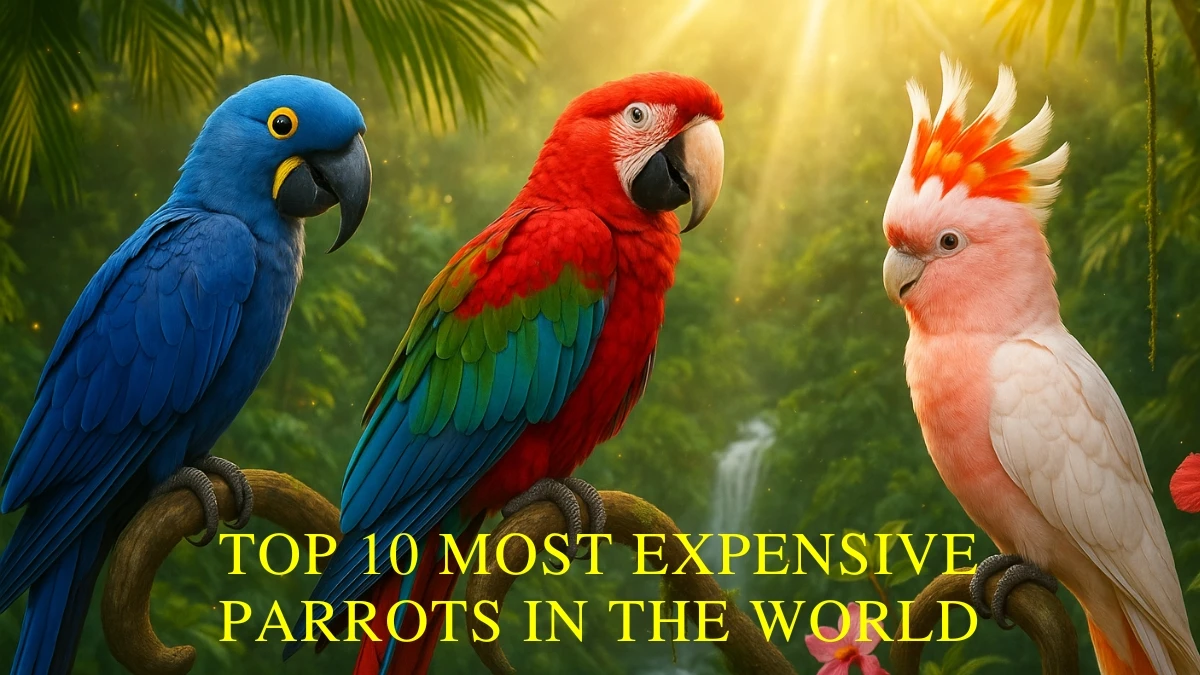Top 10 Most Expensive Parrots in the World
In 2025, parrots continue to captivate bird enthusiasts with their vibrant plumage, intelligence, and exotic charm. Some species, due to their rarity, beauty, and unique characteristics, have become incredibly valuable. These parrots are not just pets but coveted treasures in the avian world. From the majestic Hyacinth Macaw to the colorful and elusive Kakapo, these birds command staggering prices. Whether due to their rarity, endangered status, or exceptional appearance, these top 10 parrots represent the pinnacle of avian luxury. Let's take a look at the most expensive parrots in the world this year.
| Rank | Parrot Species |
|---|---|
| 10 | Galah Cockatoo |
| 9 | African Grey Parrot |
| 8 | Blue and Gold Macaw |
| 7 | Scarlet Macaw |
| 6 | Moluccan Cockatoo |
| 5 | Green-winged Macaw |
| 4 | Major Mitchell's Cockatoo |
| 3 | Black Palm Cockatoo |
| 2 | Spix's Macaw |
| 1 | Hyacinth Macaw |
10. Galah Cockatoo
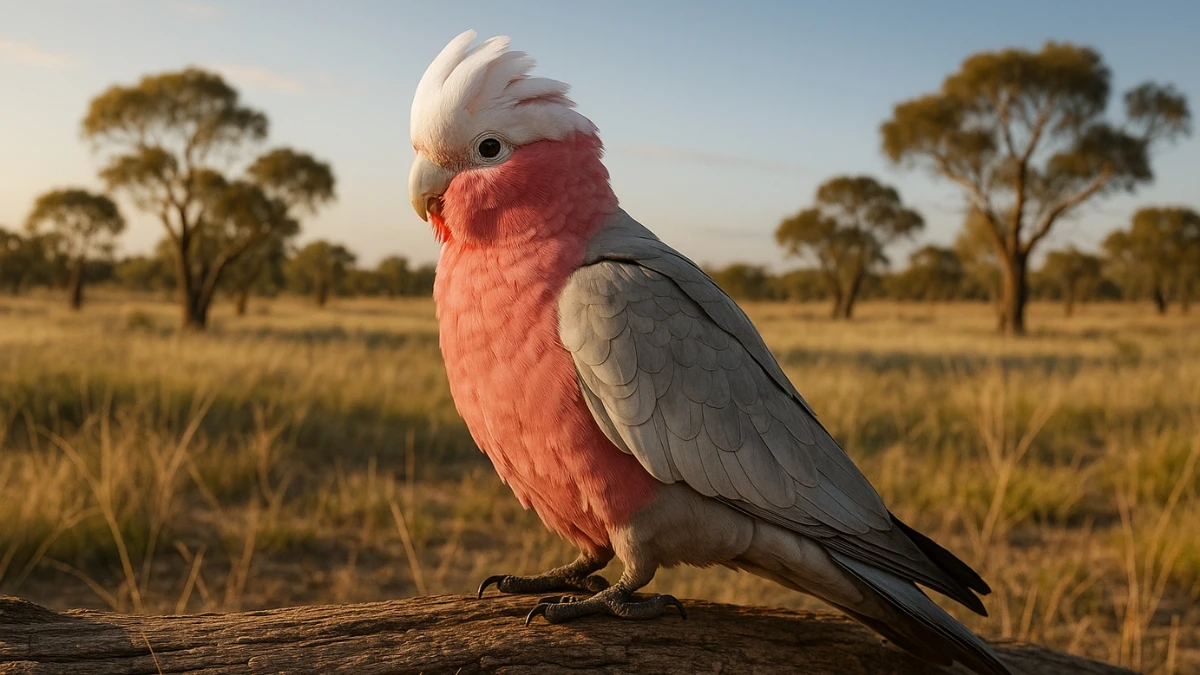
The Galah Cockatoo, also known as the Rose-breasted Cockatoo, is known for its soft pink and grey feathers. Playful and sociable, the Galah is a friendly and energetic bird that enjoys being around people. Its cheerful personality and vibrant plumage make it an ideal pet for those who appreciate an outgoing and affectionate bird.
|
Scientific Name |
Eolophus roseicapilla |
|
Price Range |
$1,500-$4,000 |
|
Origin |
Australia |
|
Weight |
10-14 oz |
Why So Expensive:
Australian export restrictions mean most Galahs outside Australia come from limited captive breeding programs. Their increasing popularity as companion birds has outpaced supply, while their reputation as gentle, family-friendly parrots drives demand.
Care Requirements:
- Large flight cage (minimum 40"L x 30"W x 60"H) or outdoor aviary
- High-quality pellets, fresh fruits, vegetables, limited seeds and nuts
- 3-4 hours supervised out-of-cage time daily
- 2-3 hours direct interaction; consider pair if single bird
- Good ventilation due to powder down production
9. African Grey Parrot

Renowned for its extraordinary ability to mimic human speech, the African Grey Parrot is considered one of the most intelligent parrot species. Its remarkable communication skills and affectionate personality make it a favorite among bird owners. African Greys are known for their deep bonds with their families and their impressive problem-solving abilities.
|
Scientific Name |
Psittacus erithacus |
|
Price Range |
$2,000-$5,000 |
|
Origin |
Central/West Africa |
|
Weight |
14-18 oz |
Why So Expensive:
Wild population declines due to habitat loss and illegal trapping have made captive-bred Greys increasingly valuable. The CITES ban on wild-caught imports means ethical breeders can charge premium prices for hand-raised babies.
Care Requirements:
- Consistent daily interaction, routine-oriented, sensitive to changes
- Quiet sleep area (10-12 hours), consistent temperature 65-75°F
- Puzzle toys, foraging activities, learning sessions
- Bi-annual checkups, monitor for feather plucking, respiratory issues
- Calcium supplements for females, stress management critical
8. Blue and Gold Macaw
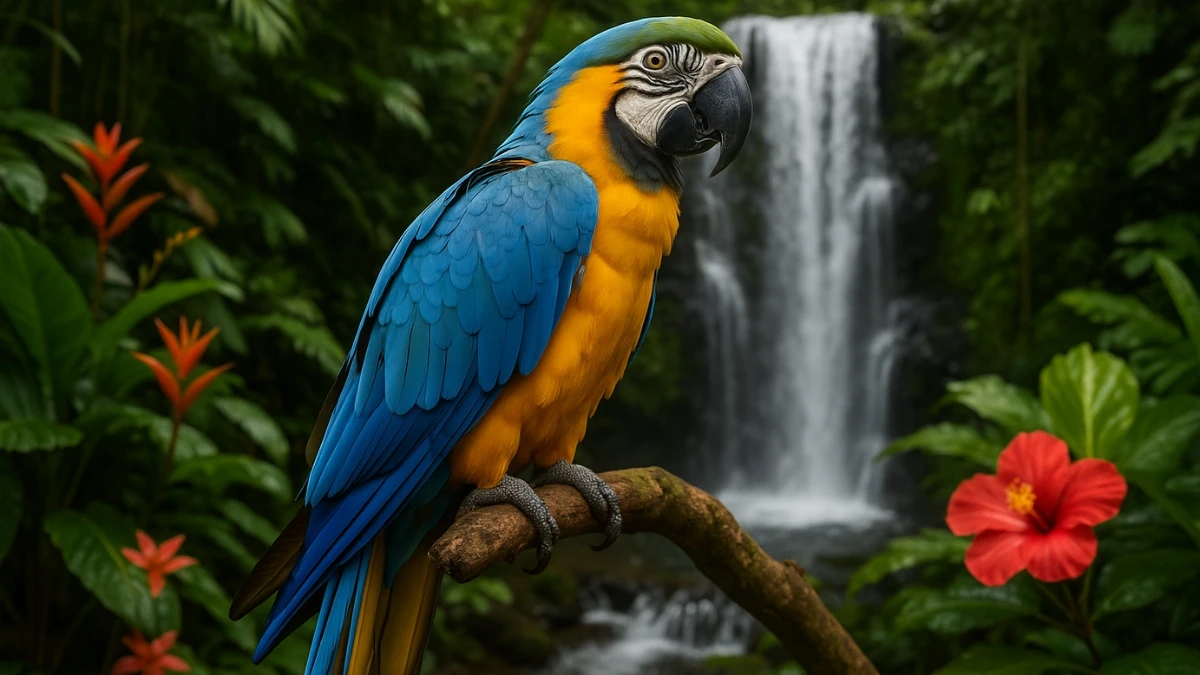
With its vibrant blue and yellow feathers, the Blue and Gold Macaw is one of the most recognizable parrot species. This affectionate and highly trainable bird is known for forming strong bonds with its human caretakers. Its charming demeanor and playful nature make it a sought-after companion bird for many.
|
Scientific Name |
Ara ararauna |
|
Price Range |
$3,000 - $6,000 |
|
Origin |
South America |
|
Weight |
2-2.5 lbs |
Why So Expensive:
Large size means expensive breeding facilities, substantial food costs, and years of care before chicks are ready for sale. Their popularity in movies and advertising has increased demand, while habitat destruction continues to pressure wild populations.
Care Requirements:
- Extra-large cage (minimum 60"L x 36"W x 72"H) or room-sized flight area
- Large parrot pellets, macadamia nuts, Brazil nuts, fresh fruits/vegetables
- 5-6 hours out-of-cage time, flight space essential
7. Scarlet Macaw
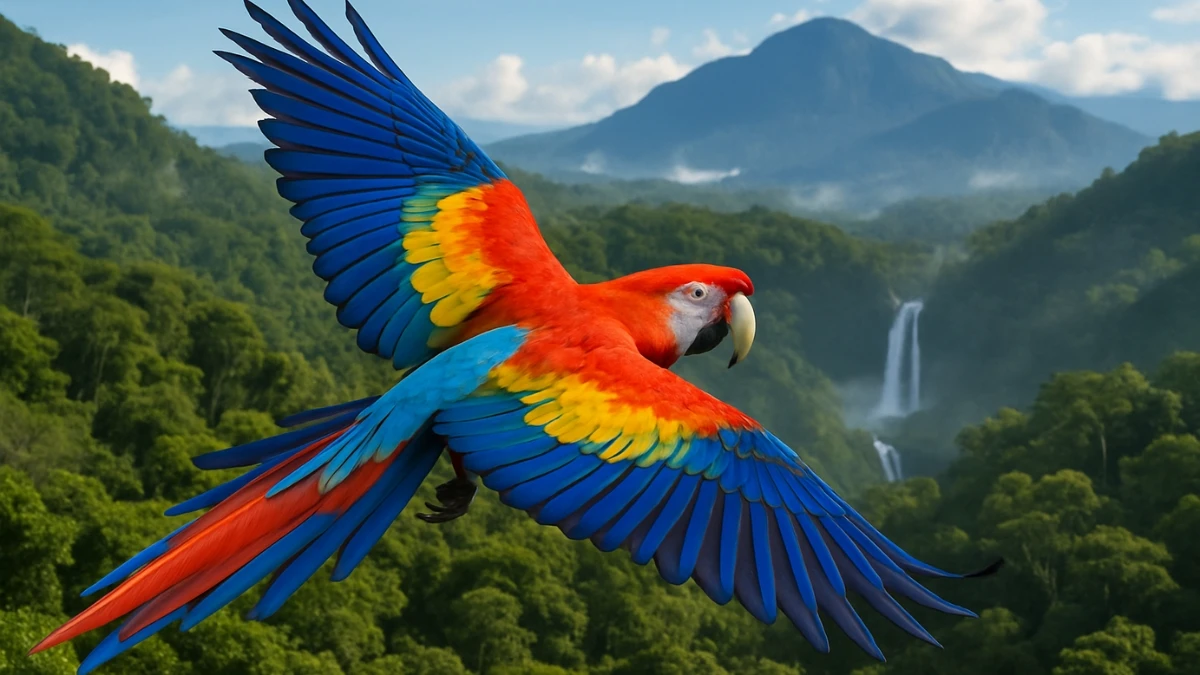
A true symbol of tropical beauty, the Scarlet Macaw is known for its vivid red, yellow, and blue feathers. This bird is not only visually stunning but also social and highly intelligent, making it a beloved species among those who enjoy working with and training parrots. Its energetic personality adds to its popularity as a pet.
|
Scientific Name |
Ara macao |
|
Price Range |
$3,500 - $7,000 |
|
Origin |
Central and South America |
|
Weight |
2-2.2 lbs |
Why So Expensive:
Scarlet Macaws face severe habitat pressure throughout Central and South America. Their slow reproduction rate breeding pairs may skip years between clutches—keeps captive populations limited despite strong demand.
Care Requirements:
- Maximum security cage (minimum 60"L x 36"W x 72"H), escape-proof locks
- High-fat nuts (palm nuts preferred), pellets, fresh produce, avoid seeds as treats only
- 5-6 hours supervised freedom, flight time critical for health
- Respect territorial nature, establish clear boundaries, consistent handlers
6. Moluccan Cockatoo
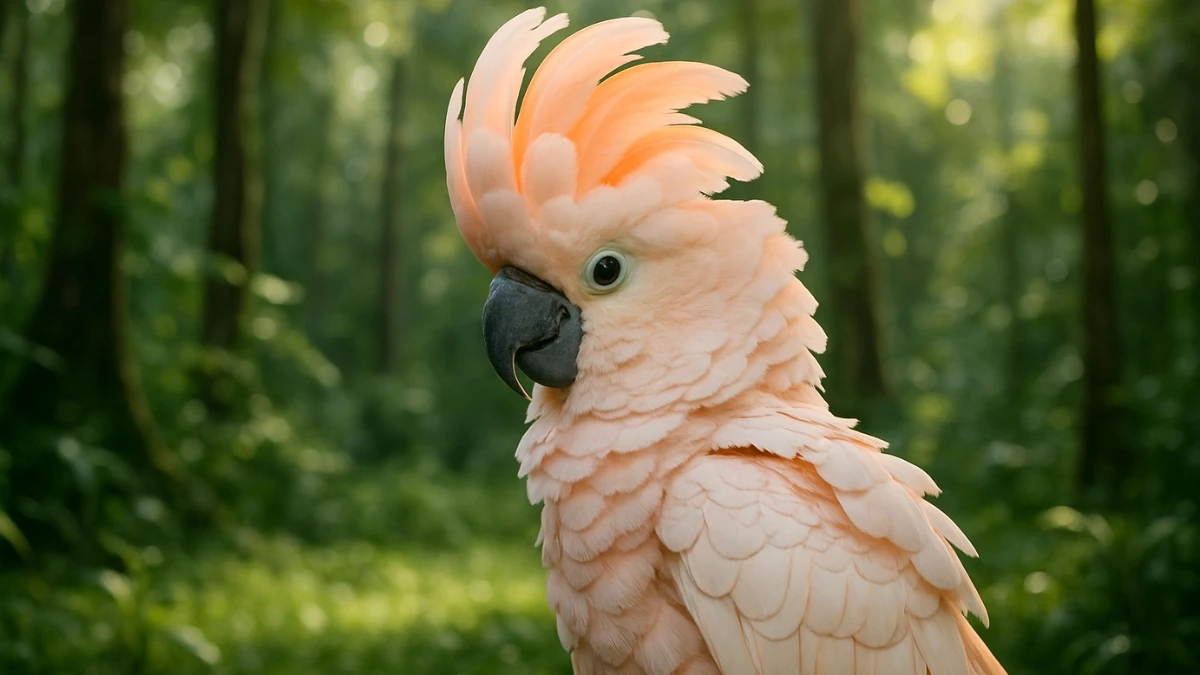
The Moluccan Cockatoo, native to the Moluccas Islands in Indonesia, is a striking bird with a large, white body and a peach-colored crest. Its affectionate personality and intelligence make it an ideal companion bird, although it requires plenty of attention and care to keep it happy and engaged.
|
Scientific Name |
Cacatua moluccensis |
|
Price Range |
$4,000 - $8,000 |
|
Origin |
Indonesia |
|
Weight |
1.5-2 lbs |
Why So Expensive:
Native to a small area of Indonesia, Moluccans face habitat destruction and were heavily trapped for the pet trade. Their complex emotional needs mean many end up in rescue situations, making well-adjusted young birds particularly valuable.
Care Requirements:
Require more daily interaction than almost any other parrot species often 4-6 hours minimum. They need secure housing (they're powerful chewers), specialized diets, and owners prepared for noise levels that can exceed jet engines.
5. Green-winged Macaw

The Green-winged Macaw is one of the most vibrant and colorful macaws, with its vivid red, green, and blue feathers. Known for its strong social nature and intelligence, this bird is a delight for those who appreciate companionship and interaction. It is an especially popular species due to its stunning beauty and loving temperament.
|
Scientific Name |
Ara chloropterus |
|
Price Range |
$4,500 - $9,000 |
|
Origin |
South America |
|
Weight |
2.5-3.7 lbs |
Why So Expensive:
Their large size means expensive breeding setups and higher food costs. Green-wings are particularly sensitive to environmental conditions, making successful breeding challenging. Their reputation as ideal "first macaws" drives demand among serious bird enthusiasts.
Care Requirements:
Need the largest possible flying space—small rooms are inadequate. Require heavy-duty perches and toys, specialized large-parrot diets, and several hours of daily social interaction. Their size means substantial setup costs.
4. Major Mitchell's Cockatoo

Often referred to as the "pink cockatoo" due to its pale pink plumage, the Major Mitchell’s Cockatoo is a beautiful and affectionate species. Known for its charming and playful demeanor, this bird's striking crest and soft pastel colors make it a favorite among parrot enthusiasts.
|
Scientific Name |
Lophochroa leadbeateri |
|
Price Range |
$5,000 - $12,000 |
|
Origin |
Australia |
|
Weight |
12-16 oz |
Why So Expensive:
Australian export bans mean all birds outside Australia come from limited captive breeding programs. Their specific environmental needs, territorial nature, and low reproduction rates keep supply extremely limited while demand remains high among serious collectors.
Care Requirements:
Need experienced handlers who understand cockatoo psychology. They require spacious housing, complex social management, and owners prepared for potential aggression issues. Their powder down can trigger severe allergies.
3. Black Palm Cockatoo
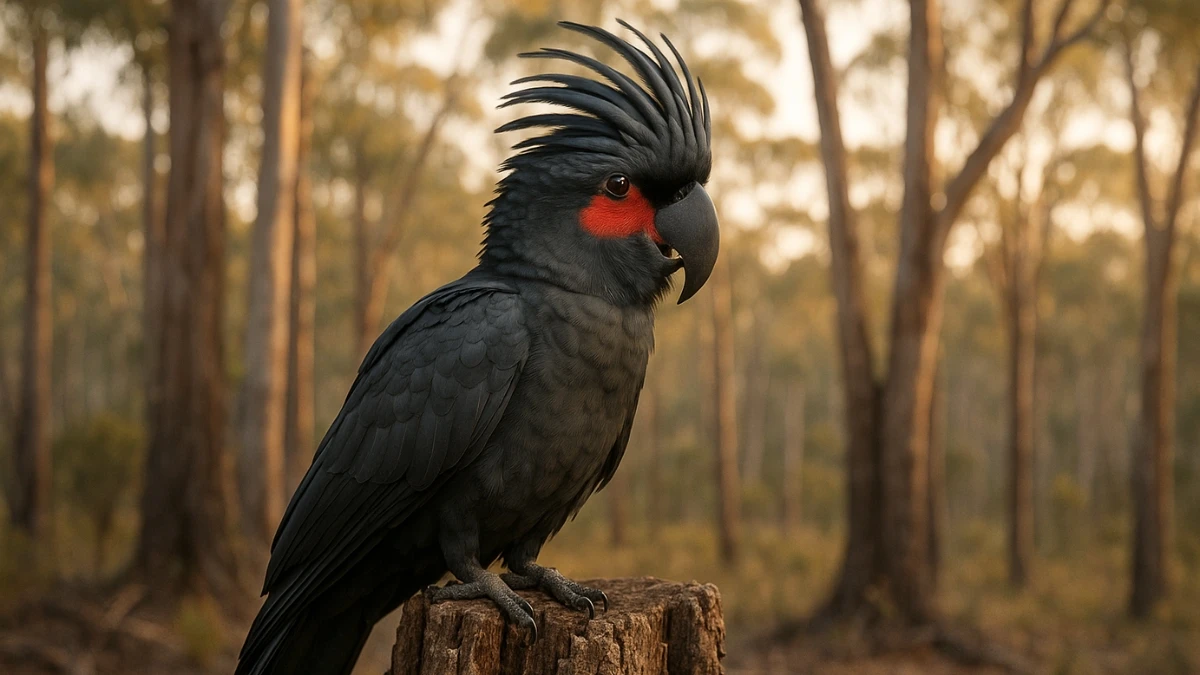
This striking bird is known for its dramatic black feathers and large beak, making it one of the most imposing and captivating parrots. Native to New Guinea and Northern Australia, the Black Palm Cockatoo is highly intelligent and enjoys a relatively secluded existence, adding to its allure and desirability.
|
Scientific Name |
Probosciger aterrimus |
|
Price Range |
$15,000 - $25,000 |
|
Origin |
Australia |
|
Weight |
1.5-2.2 lbs |
Why So Expensive:
Native to limited areas of Australia and New Guinea, export restrictions mean captive breeding is the only legal source. They have extremely low reproduction rates pairs may breed only every few years and chicks require hand-feeding for months.
Care Requirements:
Need expert-level care with massive flight spaces, specialized diets including palm nuts, and handlers experienced with large, powerful birds. Their complex social needs often require companion birds.
2. Spix's Macaw

Famous for its vibrant blue feathers, the Spix's Macaw holds a special place in conservation history. Once believed to be extinct in the wild, it has made a comeback due to intensive breeding and reintroduction efforts. This bird is celebrated for its elegance and rarity, capturing the hearts of bird enthusiasts around the world.
|
Scientific Name |
Cyanopsitta spixii |
|
Price Range |
$25,000 - $35,000+ |
|
Origin |
Brazil |
|
Weight |
10-11 oz |
Why So Expensive:
Extinct in the wild since 2000, the entire species exists in fewer than 300 captive birds held by select breeding facilities worldwide. Every bird is genetically precious, making private ownership extremely rare and expensive.
Care Requirements:
Require specialized facilities meeting international conservation standards. Private ownership is extremely restricted, with most birds held by accredited institutions participating in species survival programs.
1. Hyacinth Macaw
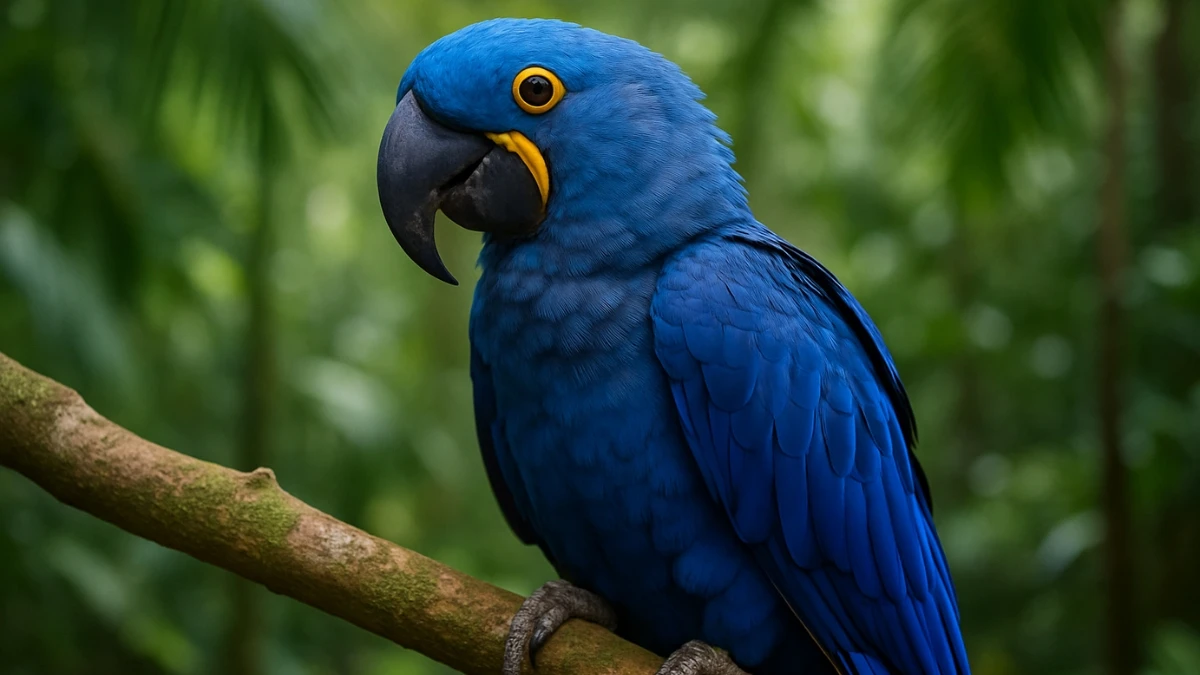
The Hyacinth Macaw is known for its stunning cobalt-blue feathers and large, striking size. As the largest macaw species, it stands out with its gentle nature and exceptional intelligence. Native to Brazil, it is highly regarded for its beauty and rarity, making it a true treasure in the avian world.
|
Scientific Name |
Anodorhynchus hyacinthinus |
|
Price Range |
$20,000 - $40,000+ |
|
Origin |
Brazil |
|
Weight |
3.5-3.7 lbs |
Why So Expensive:
Native to Brazil's Pantanal region, wild populations declined severely due to habitat loss and collecting. Their slow reproduction rate—breeding pairs may produce only one chick every two years—keeps captive populations limited despite strong demand from collectors worldwide.
Care Requirements:
Need room-sized flight spaces or large outdoor aviaries. Their powerful beaks require constant supervision and bird-proofed environments. Diet includes expensive palm nuts, and their social needs demand several hours of daily interaction.
Disclaimer:
The prices of parrots listed are approximate and can vary based on factors like age, temperament, and market conditions. Additional costs such as housing, food, veterinary care, and legal requirements may also apply. Always purchase from reputable breeders and ensure compliance with local regulations.

